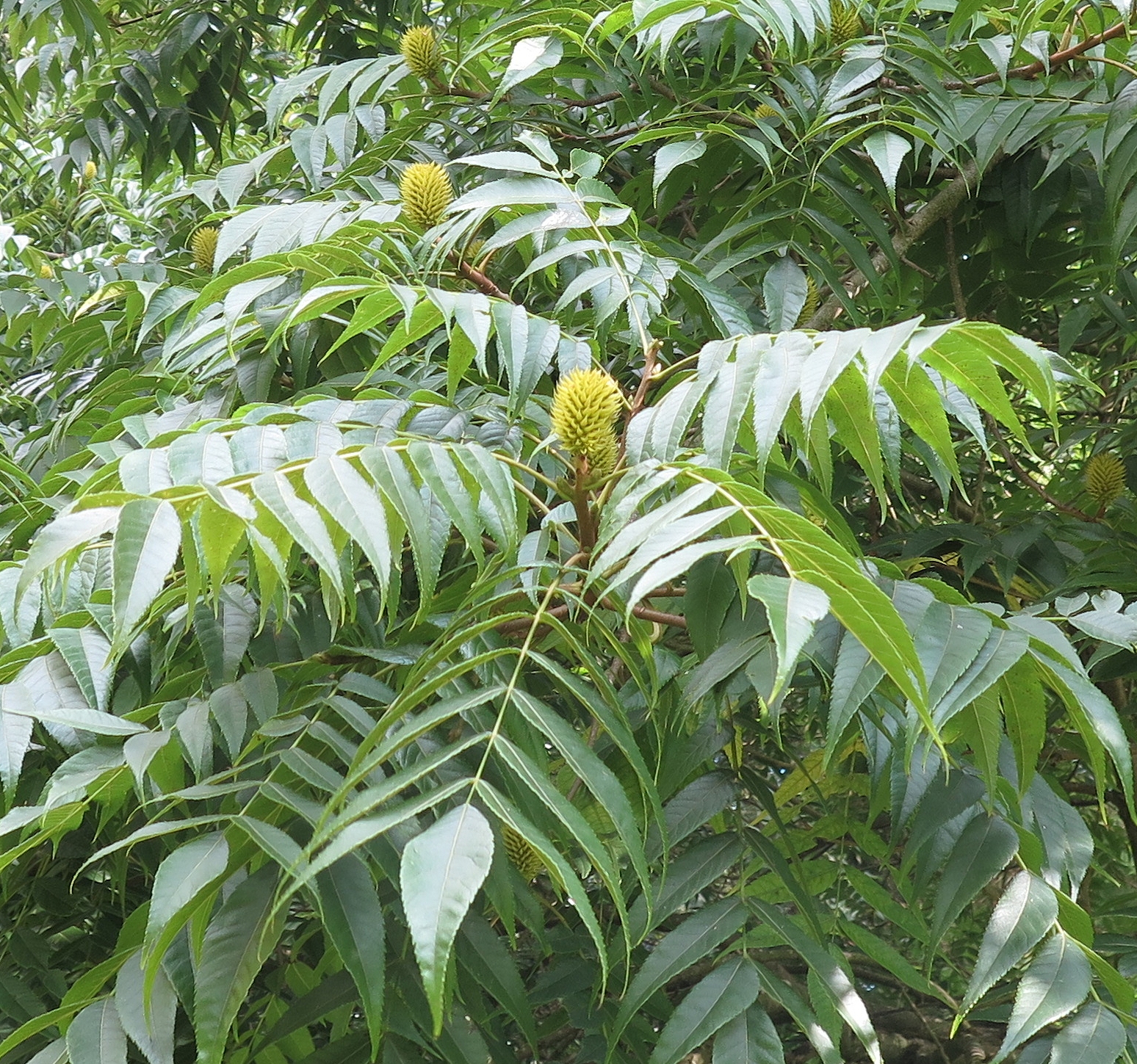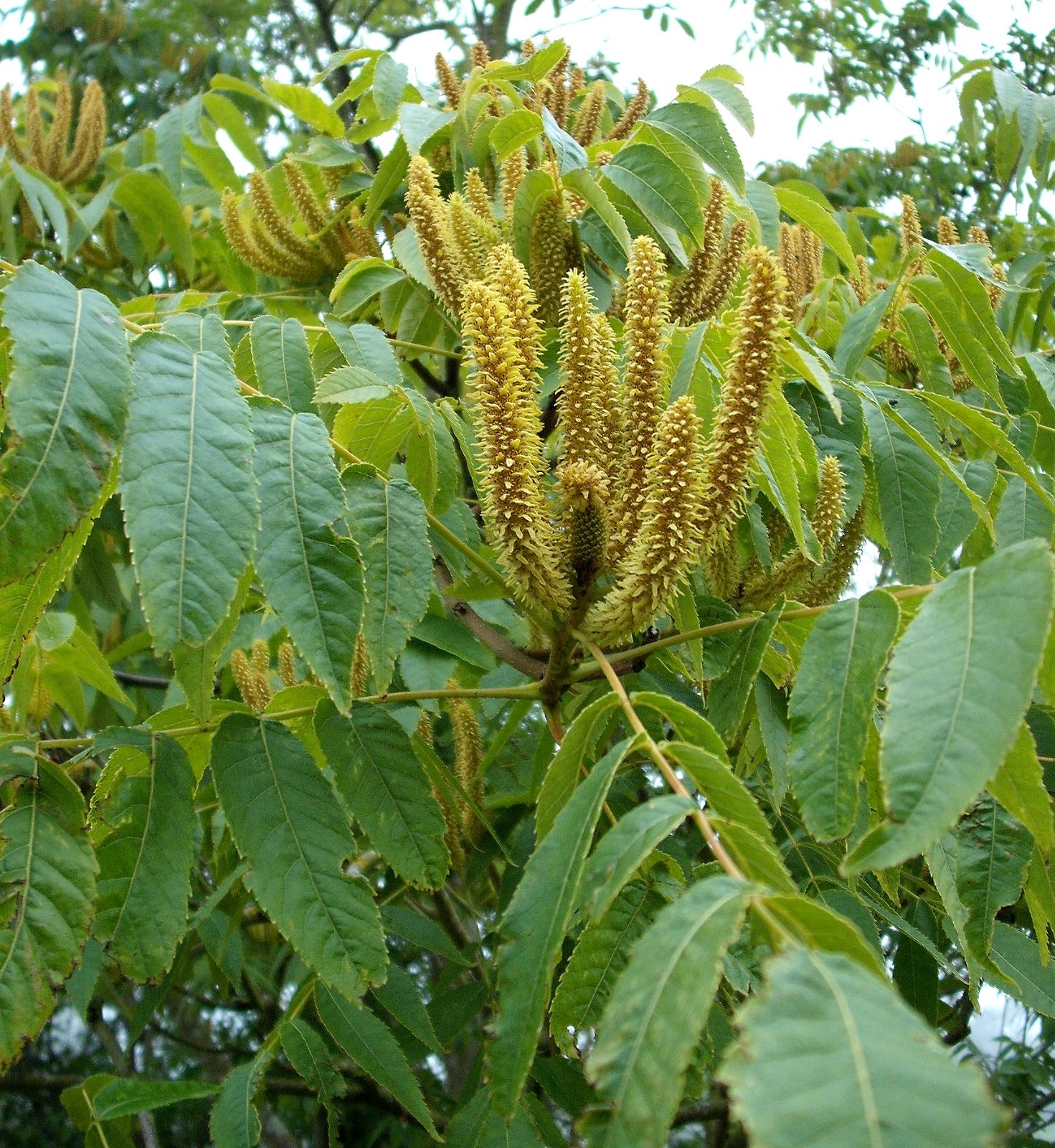Platycarya
Sponsor
Kindly sponsored by
a member of the International Dendrology Society
Credits
Julian Sutton (2019)
Recommended citation
'Platycarya' from the website Trees and Shrubs Online (treesandshrubsonline.
Family
- Juglandaceae
Common Names
- Platycarya
- Broad Nut
Synonyms
- Fortunaea Lindley
- Petrophiloides Bowerbank
A genus comprising a single species native to East Asia.
Trees or shrubs, deciduous, monoecious. Branchlets with solid pith. Leaves imparipinnate. Inflorescences clusters of erect catkins terminal on new growth; female cone-like with rigid, persistent bracts. Fruit a small, flattened, narrowly winged nutlet, 2-chambered at the base (Lu et al. 1999).
Clustered, erect catkins followed by cone-like infructescences, which persist long into winter make the Broad Nut a curious and distinctive plant. It remains remarkably rare in cultivation, given that it has been collected many times, from the mid-19th century onwards.
The closest relatives of Platycarya are the wingnuts (Pterocarya), the walnuts (Juglans), the hickories and pecans (Carya), and a single species of Cyclocarya (Manos et al. 2007; Mostajeran et al. 2017). These phylogenetic studies, whilst not complete, suggest that Platycarya may be sister to a group of three genera, Pterocarya, Juglans and Cyclocarya. There is little chance of mistaking a Platycarya in flower or fruit for any of its relatives.
Fossils of extinct Platycarya spp. are not seen until the Eocene, but are ‘ubiquitous and abundant’ (Wing & Hickey 1984) in early Eocene deposits (c. 50 MYA) right across the Northern Hemisphere. During the Pleistocene ice ages, the genus became repeatedly confined to a number of refugia in East Asia (Chen et al. 2012) and has not recolonised beyond the region.
The generic name Platycarya, from the Greek platys (flat) and karyon (a nut), predates Fortunaea Lindley published in ignorance shortly afterwards. The earlier name Petrophiloides Bowerbank has sometimes been used, following Reid & Chandler (1933) but that genus was based on a fossil species, so Platycarya based on a living species again takes priority.
Apart from P. strobilacea, a number of living species have been described. In their Flora of China account, Lu et al.(1999) treat P. longipes Wu as a synonym of P. strobilacea, considering that it intergrades with typical P. strobilacea. They treat P. simplicifolia G.R. Long as no more than a simple-leaved mutant form. P. longzhouensis Liang & Liang was described after the publication of Flora of China, but the name seems not to have been picked up in the research literature, and in their overview of the Juglandaceae Kozlowski et al. (2018) treat it as another synonym of P. strobilacea.


